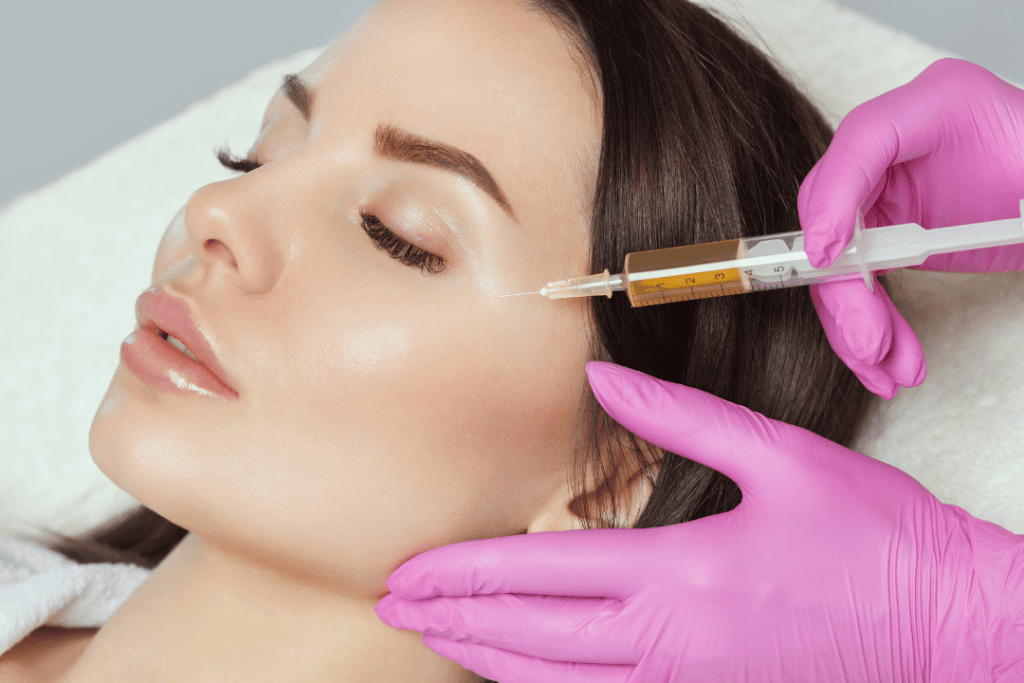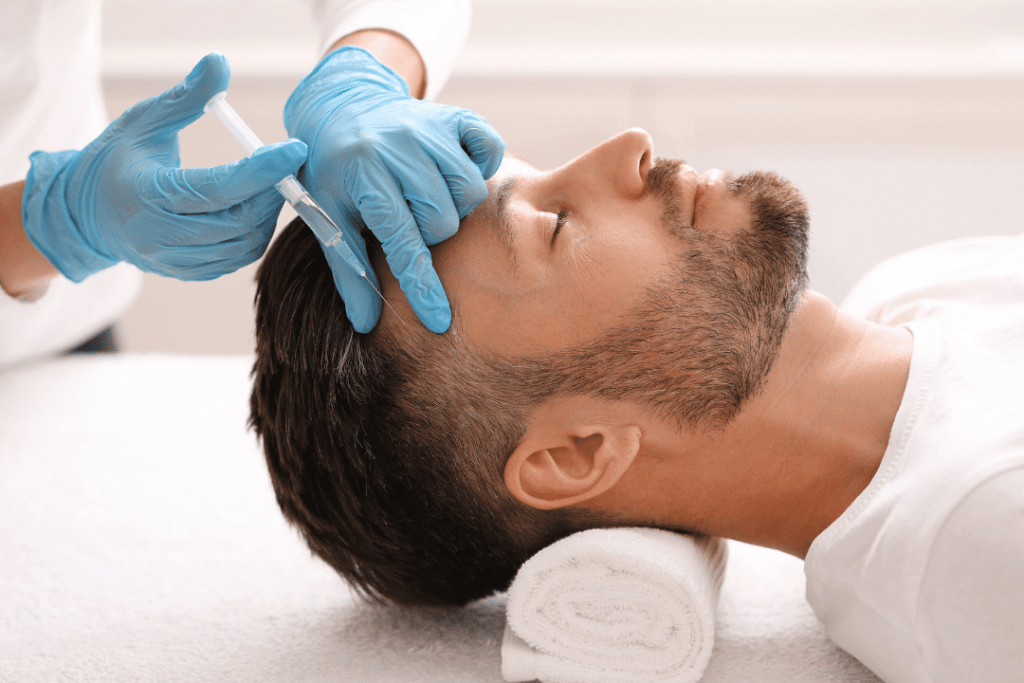Platelet Rich Plasma
PRP TREATMENT
Platelet Rich Plasma
Platelet Rich Plasma (PRP) is derived from your own blood, by taking a sample of venous blood, placing it in a special PRP tube, and spinning the blood in a medical centrifuge for about 20 min. This separates your whole blood into components which includes your red blood cells, platelets, and plasma (the non-cellular fluid in blood). The middle layer constitutes PRP, which contains highly concentrated platelets, the cells that normally promote blood clotting. These cells also contain a number of specialized chemicals called growth factors. These include platelet derived growth factor, transforming growth factor beta, and vascular endothelial growth factor.
At Revive MD Medical Spa, our meticulous team, led by Dr. Beshay, offers Platelet Rich Plasma (PRP) Therapy, utilizing cutting-edge techniques to tailor treatments to your goals. Harnessing the power of your own blood’s concentrated platelets and growth factors, we promote healing and reduce inflammation for rejuvenation and recovery.
TREATMENT OPTIONS
In the recent years, PRP has been widely used to help in the prevention of hair loss and to promote hair thickening, face and body rejuvenation by stimulating the natural collagen and elastin production to the face, neck, hands, joints and tendons, it also accelerates the healing process of injuries, stress incontinences in females, sexual health in males (erectile dysfunction) and female (orgasm and sexual desire).
FACE REJUVENATION

PRP treatment for face rejuvenation which is known as Vampire Facials improves skin health by boosting collagen formation, eliminating wrinkles, and firming skin. It enhances texture and tone while also treating pigmentation, acne scars, and pores, resulting in a more luminous complexion.
HAIR LOSS

PRP treatment for hair loss improves hair health by stimulating hair follicles, boosting growth, and enhancing hair density. It revitalizes the scalp, increasing hair texture and strength, and effectively combats thinning and shedding for a fuller, healthier head of hair.
JOINT PAIN

PRP treatment for joint pain improves joint health by accelerating tissue repair, lowering inflammation, and increasing collagen formation. It enhances joint function and mobility, alleviates pain and discomfort, and promotes the repair of injured or degenerative joints, providing long-term relief.
IDEAL CANDIDATE
Explore our non-invasive and natural options for wellness and rejuvenation, find relief and enhancement through PRP treatment. Ideal candidates are those seeking to address:
- Fine lines
- Wrinkles
- Acne scars
- Hair loss or thinning hair
- Joint pain
- Arthritis
- Tendonitis
- Orthopedic injuries
- Tendon strains
- Ligament strains
- Osteoarthritis
- Post-surgery healing
- Those seeking natural cosmetic procedure
TARGET AREAS
At Revive Medical Spa, discover our comprehensive approach to rejuvenation and recovery, with targeted treatments including:
- Facial rejuvenation
- Scalp rejuvenation for hair loss
- Joint pain and inflammation
- Muscle injuries and strains
- Sexual health areas
AVERAGE COST
PRP TREATMENT
The basic idea behind PRP injection is to deliver high concentrations of growth factors to an area of injury, with the hope of stimulating a healing response and reducing inflammation in the tissue. To some extent, injection of whole blood will stimulate the same response, but to a much lesser degree.
PRP has been used since 1987 to help promote healing in dental, orthopaedic, and plastic surgery procedures. Over the past 5 years, PRP has been recognized for its potential in treating both chronic and acute musculoskeletal injuries involving tendons, ligaments, and muscles. This procedure is gaining world wide media attention as it has been used in professional athletes in attempts to return them to competition as soon as possible. Book Now →
